Dealing with hip pain can be extremely discouraging. Like low back pain or knee pain, it affects every area of your life! If you’re struggling to move the way you used to, pick up your grandchildren, get in and out of vehicles, etc, you are not alone!
Hopefully, by the end of this article, you will have a basic understanding of whether or not arthritis may be the cause of your hip pain, and more importantly, what to do about it!
First, some background on Arthritis
The Arthritis Foundation reports t hat 26% percent of women and 18% of men have been diagnosed with some type of arthritis. Osteoarthritis, the wear and tear type, is the most common. Almost two thirds of these individuals are of working age. Arthritis and other non-traumatic injury joint disorders are among the costliest conditions to treat and manage in the United States. According to the Center for Disease Control, 2016, there are over 100 types of Arthritis. For more information about each type of arthritis, visit arthritis.org.
There are several chronic conditions in which arthritis is commonly associated:
- 49 percent of adults with heart disease have arthritis.
- 47 percent of adults with diabetes have arthritis.
- 31 percent of adults who are obese have arthritis.
In each of these conditions most people are limited in their level of activity and movement. But don’t stop moving! What we know is that physical activity can reduce pain and improve physical function by about 40 percent. Hopefully, the exercises listed in this article will help reduce your pain enough to return to an active lifestyle.
Osteoarthritis (OA) affects more than 30 million Americans. It is the most common arthritis and is not limited to older adults. In normally healthy individuals OA can develop in joints that have sustained an injury and/or required surgery. High demand jobs and involvement in athletics makes one vulnerable to wear and tear of joints, leading to OA. OA is a chronic condition that can affect any joint, but it occurs most often in knees, hips, lower back, neck, small joints of the fingers and the bases of the thumb and big toe. Currently, there is no cure for OA.
In normal joints, cartilage covers the end of each bone. Cartilage provides a smooth, gliding surface for joint motion and acts as a cushion between the bones. In OA, the cartilage breaks down, causing pain, swelling and problems moving the joint. As the condition worsens over time, bones may break down and develop growths called spurs. Bits of bone or cartilage may chip off and float around in the joint. This can cause inflammation and further damage the cartilage. In the final stages of OA, the cartilage wears away and bone rubs against bone, leading to joint damage and more pain. When OA becomes severe, one may need a joint replacement surgery.
How can one identify the root cause of hip pain and deal with it before needing to resort to surgery?
Even with an X-ray that shows minimum to moderate hip joint degeneration (another name for arthritis), often the pain is associated with the tissues surrounding the joint. Additionally, other structures such as the sacroiliac joint and the low back can cause pain that seems to come from the hip.
Common ways to differentiate whether your hip pain is coming from arthritis in your hip.
A progressive loss of mobility in your hip will be our first clue. If the following motions are limited and/or painful, it may indicate issues in your hip joint.
- Lie on your back, pull your pain free hip to your chest as far as it will go. If your painful hip comes off the bed or floor, this indicates tightness in your hip flexors.
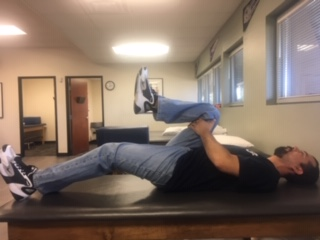
- Pull your involved hip up toward your chest. If it is tight and limited, this indicates hip joint involvement.
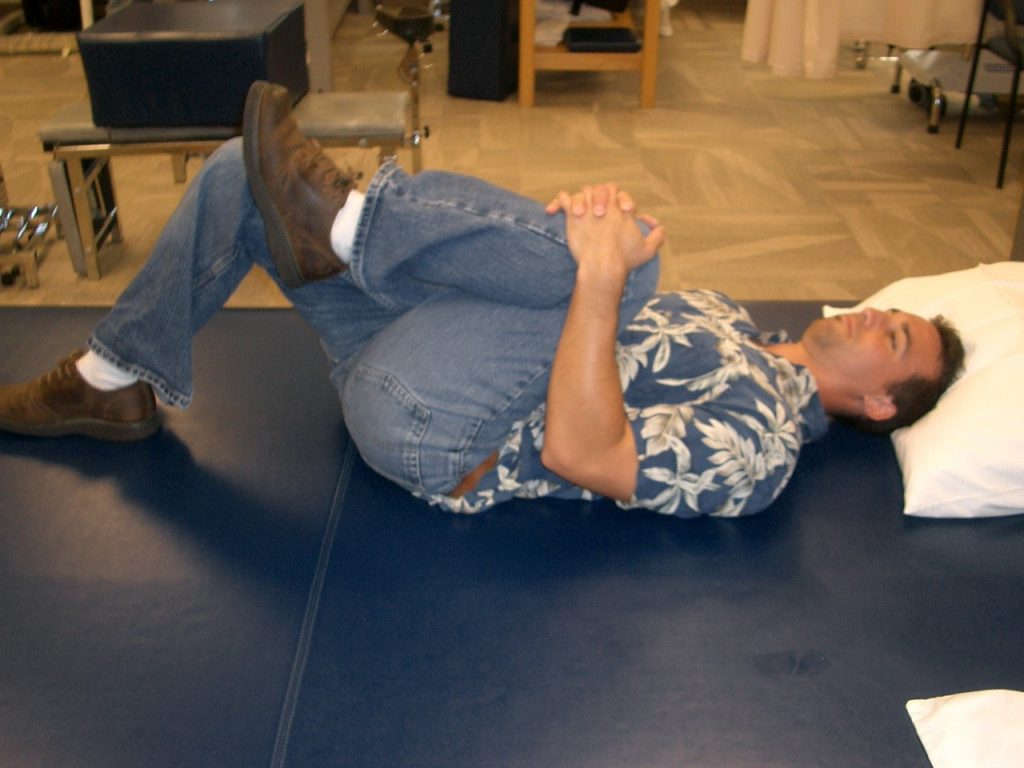
- While seated, keeping your knees together, roll your feet out.
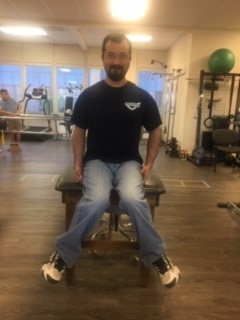
- Increased joint stiffness and pain with prolonged sitting and inactivity.
- Moderate movement decreases your hip pain and stiffness.
- Early in AM worse pain and stiffness.
- Prolonged standing and walking may increase your pain and stiffness.
- End of a long day walking will increase your pain and stiffness.
- Your Doctor may inject your hip with pain medicine. If the pain disappears, even for only a couple of hours, then the source of your pain is likely your hip.
- You might try using a cane in the opposite side as your hip pain. If this increases your tolerance to activity, the hip may be the source of your pain.
- The location of your pain can implicate the hip.
- Pain from Osteoarthritis of the hip usually will be localized to the front and outside of the hip as well as the groin. Pain low in the buttocks, up on the flair of your hip, (at or below the belt line) or in the back of the hip near the sacrum are usually caused by other structures.
- Ironically knee pain described as an ache may be from arthritis in the hip.
- Sharp burning pain, shooting down into the buttocks and back of the leg is likely not arthritis of the hip.
- Some pain in the buttocks may be related to a group of muscles in the hip, with the piriformis being a likely culprit.
What is one to do?
Irrespective of the type of Arthritis or the likely cause of your symptoms, beginning a flexibility and strengthening program will help reduce the level of pain and allow you to be more active. However; if your pain gets worse and there is no improvement please consult your physician or physical therapist.
Flexibility Stretches:
1. Piriformis Stretch
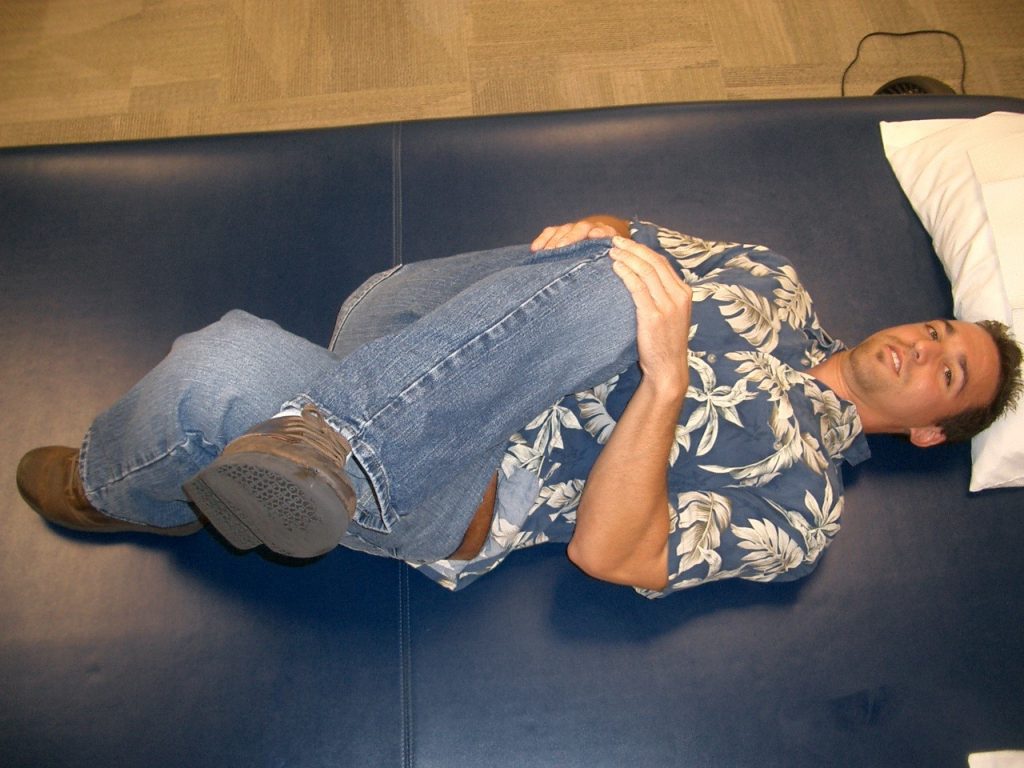
2. Hamstring Stretch
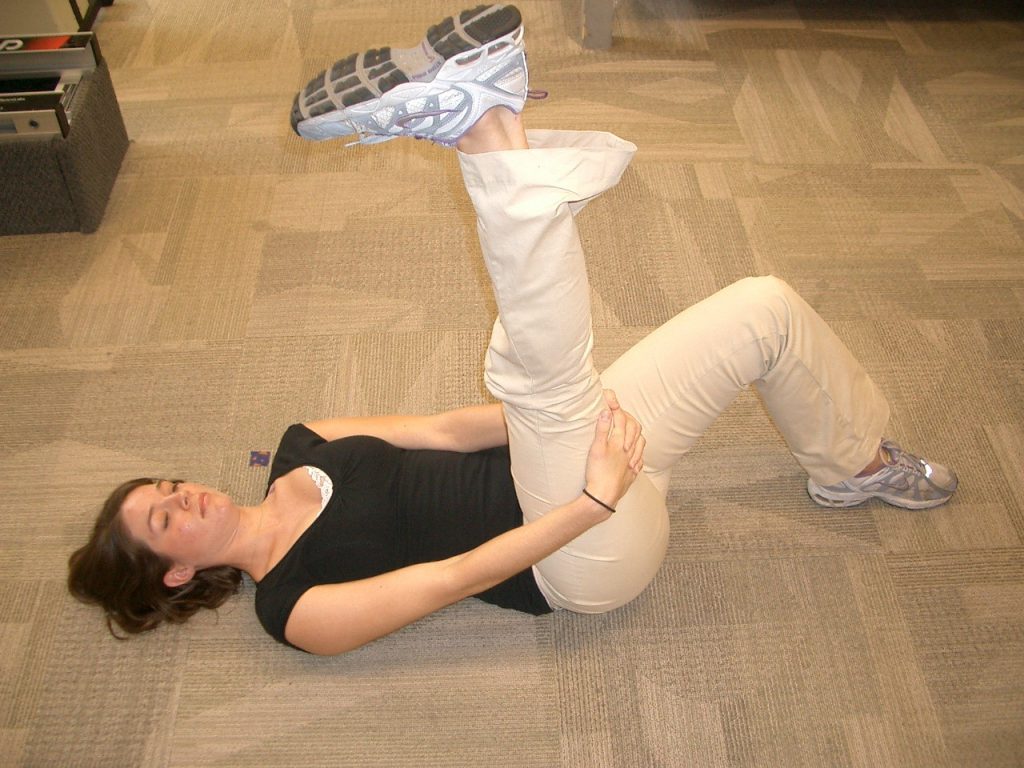
3. Calf Stretch
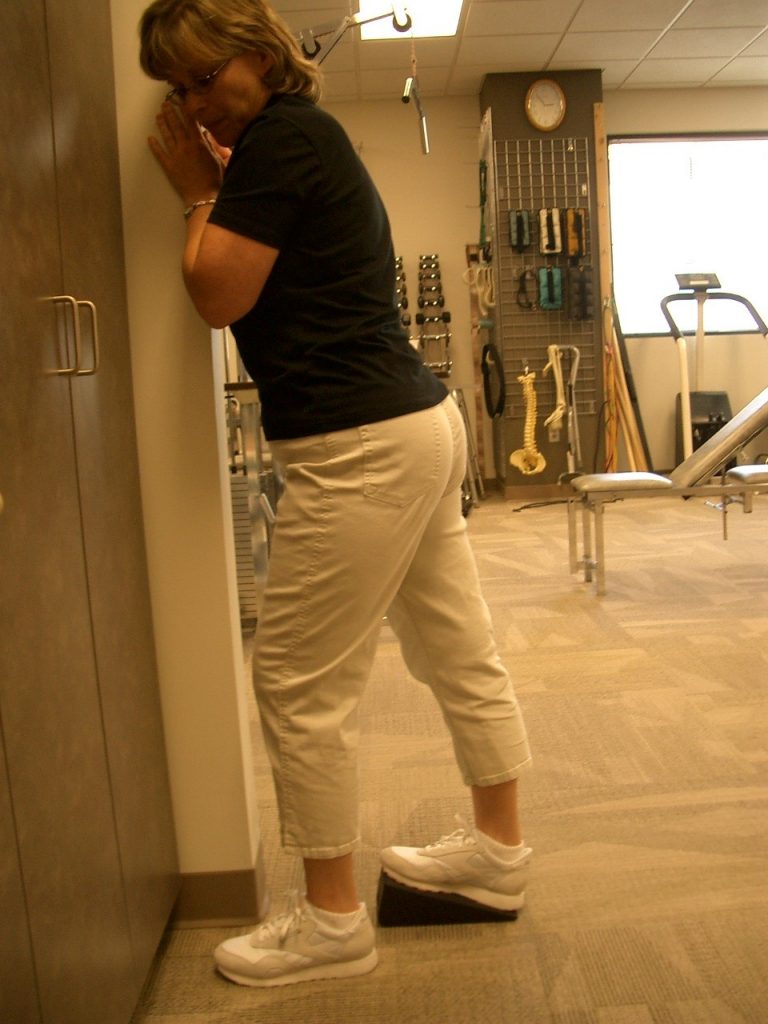
4. Hip Flexor Stretch
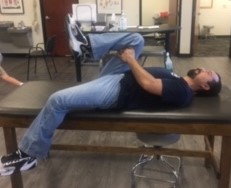
5. Opposite Arm Leg
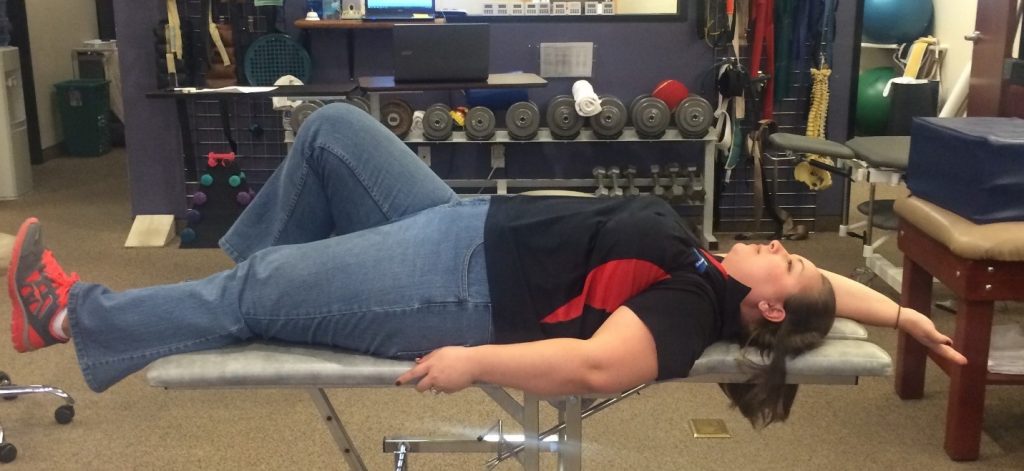
Strengthening:
- Bridging
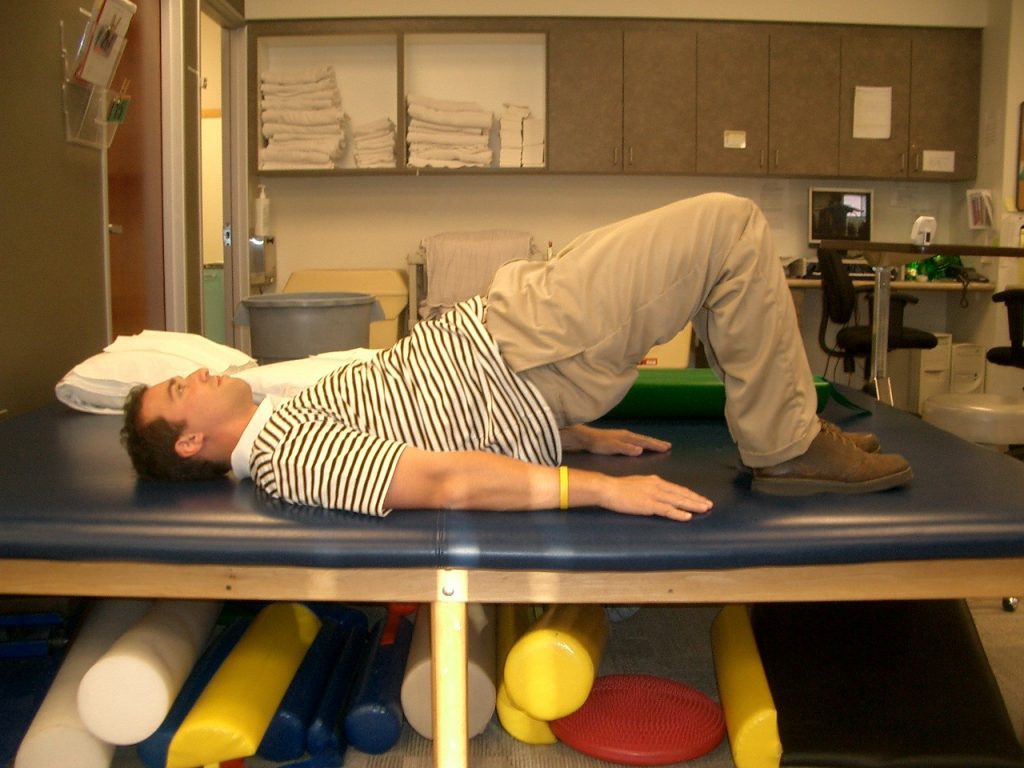
2. Short Arc Quadriceps Sets
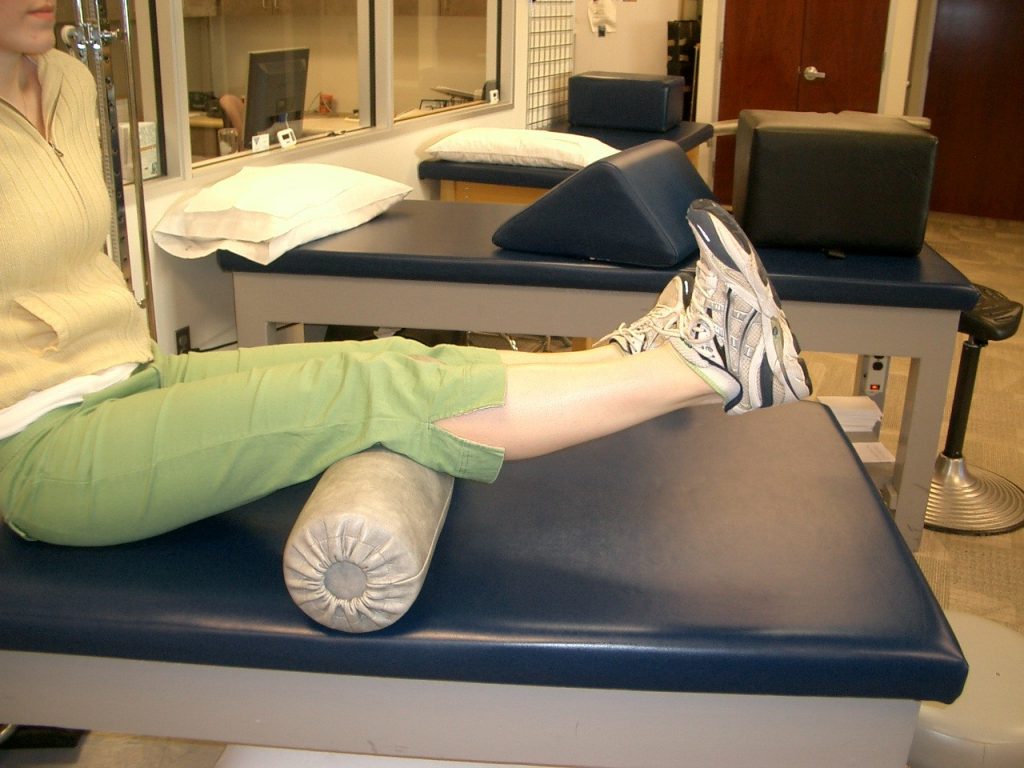
3. SLR
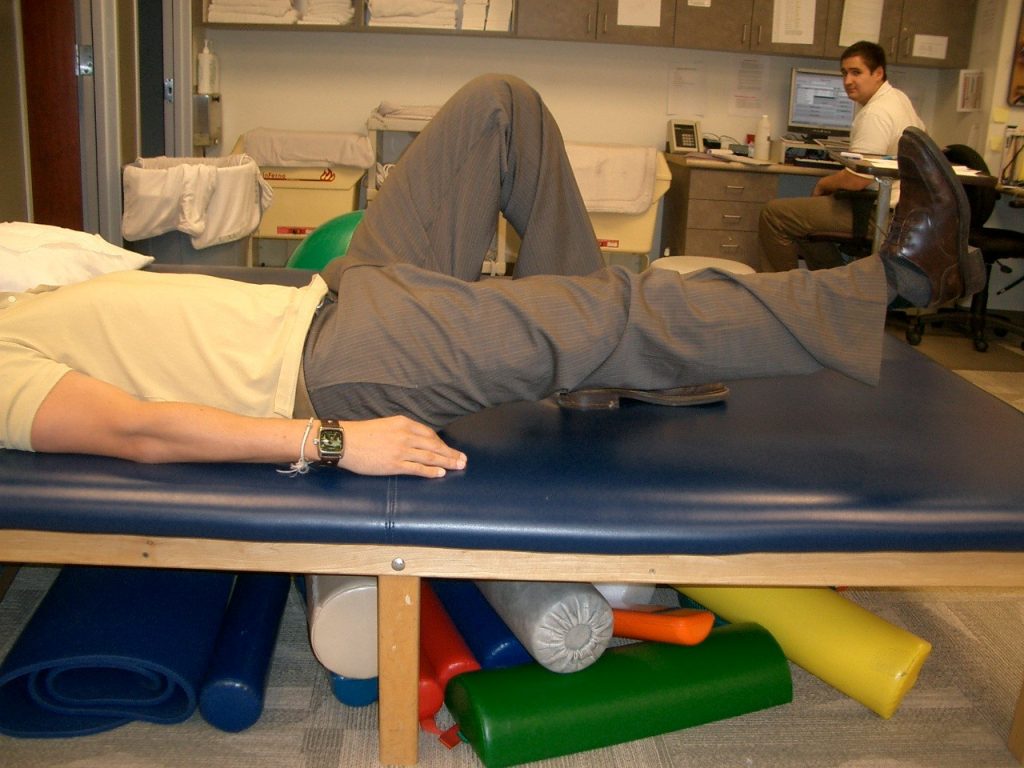
4. Hip abduction


















